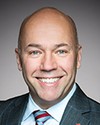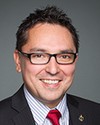—at reduced time.
I read an article a couple of days ago and it was in the Sun, of all places. I don't read the Sun, it was just in my Google news feed. It had to do with spending on administration in health and it compared northern European countries and Canada. We're spending more or the same, but we have worse health outcomes. Part of the argument in the article was that the bureaucracy in our health care system here in Canada is so massive that it takes so long to make decisions and it takes so many layers just to get anything done.
I see in my province of Ontario, LHINs, local health integration networks, which I thought was a horrible idea because I spent a little bit of time in Manitoba Health at the aboriginal health branch years ago. Before I was there, the creation of the regional health authorities of Manitoba took place. I didn't understand why they were created. I understood why they thought it was a good idea but one of the regions, the Winnipeg Regional Health Authority, essentially became Manitoba Health.
Why did we have people at Manitoba Health doing the same things? They became a monster. They kept on growing. They expanded into different office buildings and we had our health budget going to bureaucrats.
The problem I hear in Ontario, and it's from the first nations health directors—again another layer of bureaucracy, if you will—maybe, but they're on the ground. They know what the immediate problems are in the community. I'd rather see that than have someone in Thunder Bay at an LHIN making decisions. What I'm hearing from the first nations and the health directors and the health providers is that the LHINs are making bad decisions. I think we're going to hear this in Sioux Lookout tomorrow. They're designed to make local decisions because they're supposed to be local experts, but they're making bad decisions on all kinds of things that affect the health outcomes of people from northern first nations, from urban aboriginal populations in northwestern Ontario.
I like the idea of a First Nations Health Authority, to get rid of some of the bureaucracy, but to link that more with the communities and the health directors, and having them with you, having one oversight body for all first nations.
I think that would clear up a lot of the duplication that's everywhere. We heard from the Provincial Health Services Authority, an excellent program, but it is a program that the First Nations Health Authority should be delivering on, indigenous mental health, because you guys should be the experts on that. It's just duplication.
What do you see your future becoming? What are your aspirations for the First Nations Health Authority? Was I on the right track with reducing bureaucracy and having you do part of that?





